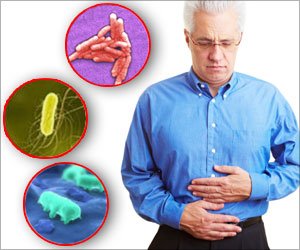Uncovering the Role of Small RNAs in Salmonella Infections

SPI-1 is controlled by an extensive regulatory network. First, three transcription factors: HilD, HilC, and RtsA, all control their own and each other’s DNA expression. They also activate another transcription factor, HilA, which activates the rest of the SPI-1 genes. If this isn’t complicated enough, SPI-1 also needs to sense a variety of environmental cues and tune the expression of its genes in order to infect its host.
“We have known for a long time that there are a lot of environmental factors that feed into the gene regulation in Salmonella. However, we didn’t know how. That’s when researchers started looking at small RNAs,” Abdulla said.
Small RNAs Facilitate Bacterial Invasion
As a result, sRNAs affect a variety of bacterial functions, including virulence and responses to the environment.
Advertisement
In this paper, the researchers looked at the sRNAs that regulate the hilD mRNA, specifically a sequence on the mRNA called the 3′ untranslated region, a part of the mRNA not involved in making the HilD protein. In bacteria, the 3′ UTRs are usually 50-100 nucleotides long. However, the 3′ UTR of the hilD mRNA was 300 nucleotides long.
“The starting point for my work was the observation that when we deleted the 3′ UTR, the expression of the hilD gene went up 60-fold,” Abdulla said. “We then decided to look for sRNAs that might be interacting with this region.”
The researchers determined that although the sRNAs Spot 42 and SdsR can both target the 3′ UTR, they do so in different regions. “This result suggests that the entire 3′ UTR is important for regulation,” Abdulla said. “We showed that the sRNAs stabilize the hilD mRNA and protect it from being degraded.”
“Such long 3′ UTRs have not been well studied. With more genomic research, people are realizing more and more that these longer regions exist and that they are important for regulation,” Abdulla said.
Using mice, the researchers also looked at whether Spot 42 and SdsR can affect how Salmonella causes infections. They performed mouse competition assays, where they introduced mutant bacteria that lacked the sRNAs and bacteria that contained the sRNAs, to see which strains survive and cause infection. “We found that when the sRNAs are deleted, the bacteria cannot survive in the host. We also showed that the sRNAs play a role in helping SPI-1 invade the host cells,” Abdulla said.
“Now that we know that sRNAs play an important role in controlling SPI-1 through their regulatory effects on the hilD 3′ UTR, we want to extend our studies in two directions. We’d like to understand more about how, at a molecular level, the sRNAs influence hilD mRNA levels. We’d also like to better understand how sRNAs participate in regulating expression of other important SPI-1 genes,” said Cari Vanderpool (MME/IGOH), a professor of microbiology.
Source: Eurekalert
Source link
#Uncovering #Role #Small #RNAs #Salmonella #Infections



